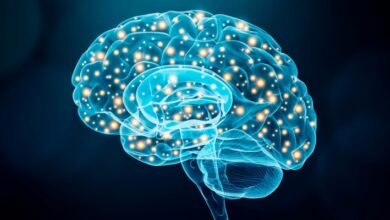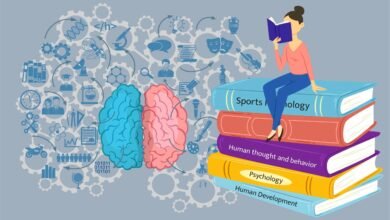The Critical Inner Workings of the Human Brain: Understanding 2024

Understanding the inner workings of the human brain is a fascinating journey into the depths of our consciousness. The human brain is a marvel of nature, a complex organ that governs our thoughts, emotions, behaviors, and bodily functions. It is the command center of the nervous system, comprising billions of neurons that communicate through intricate networks of synapses.
Introduction to the Human Brain
At the core of our being lies the brain, weighing around 3 pounds on average. Despite its relatively small size, it is the most complex organ in the human body. The brain is responsible for processing sensory information, controlling movement, regulating physiological functions, and enabling higher cognitive functions such as reasoning, problem-solving, and creativity.
Structure of the Human Brain
The brain can be divided into several distinct regions, each with its own specialized functions. The two hemispheres, left and right, are connected by a bundle of nerve fibers called the corpus callosum. Within each hemisphere, there are four main lobes: frontal, parietal, temporal, and occipital. These lobes play crucial roles in motor control, sensory perception, language processing, and visual interpretation.
Functions of Different Brain Regions
The cerebral cortex, the brain’s outer layer, is responsible for higher cognitive functions, including consciousness, language, and memory. The limbic system, situated beneath the cortex, regulates emotions, motivation, and long-term memory. The brainstem and cerebellum control basic bodily functions such as breathing, heart rate, and balance.
Cerebral Cortex:
- The cerebral cortex, the brain’s outer layer, is responsible for a wide range of higher cognitive functions, including perception, language, memory, reasoning, and consciousness.
- The frontal lobe, located at the front of the brain, is involved in executive functions such as decision-making, problem-solving, and emotional regulation.
- The parietal lobe, situated at the top of the brain, processes sensory information related to touch, temperature, pain, and spatial awareness.
- The temporal lobe, found on the sides of the brain, plays a key role in auditory processing, language comprehension, and memory formation.
- The occipital lobe, located at the back of the brain, is primarily responsible for visual processing and interpreting visual stimuli from the environment.
Limbic System:
- The limbic system, often referred to as the “emotional brain,” is a group of structures located beneath the cerebral cortex that regulate emotions, motivation, and memory.
- The amygdala, an almond-shaped structure, is involved in processing emotions such as fear, pleasure, and aggression, as well as in forming emotional memories.
- The hippocampus, located within the temporal lobe, plays a crucial role in the formation and retrieval of long-term memories, particularly episodic and spatial memories.
- The hypothalamus, situated below the thalamus, controls basic physiological functions such as hunger, thirst, body temperature, and circadian rhythms.
- The thalamus serves as a relay center for sensory information, directing incoming signals from the senses to the appropriate areas of the cerebral cortex for further processing.
Brainstem and Cerebellum:
- The brainstem, comprising the midbrain, pons, and medulla oblongata, connects the brain to the spinal cord and regulates essential functions such as heart rate, breathing, digestion, and arousal.
- The cerebellum, located beneath the occipital lobe, coordinates voluntary movements, balance, posture, and motor learning. It receives input from the sensory systems and the cerebral cortex to fine-tune motor skills and maintain equilibrium.
- The reticular formation, a network of neurons within the brainstem, plays a critical role in regulating sleep-wake cycles, consciousness, and attention. It filters sensory information and modulates arousal levels based on internal and external stimuli.
Understanding the functions of different brain regions provides insights into how neural networks interact to support various cognitive, emotional, and physiological processes essential for human functioning and behavior.

Neurotransmitters and Their Role
Neurotransmitters are chemical messengers that transmit signals between neurons. Dopamine, serotonin, and noradrenaline are examples of neurotransmitters that regulate mood, sleep, appetite, and stress response. Imbalances in neurotransmitter levels can lead to various mental health disorders such as depression, anxiety, and schizophrenia.
Brain Development and Plasticity
The human brain undergoes significant development and refinement throughout life, particularly during early childhood and adolescence. Neural plasticity, the brain’s ability to reorganize itself and form new neural connections in response to experience, is fundamental to learning, memory, and recovery from brain injury.
The Brain and Emotions
Emotions are intricate neurobiological processes involving the interaction of multiple brain regions, including the amygdala, hippocampus, and prefrontal cortex. The limbic system plays a central role in processing emotions, regulating mood, and generating emotional responses to external stimuli.
Memory and Learning Processes
Memory formation involves the encoding, storage, and retrieval of information in the brain. Short-term memory relies on transient changes in neural activity, while long-term memory involves structural and biochemical alterations at the synaptic level. Learning is the process of acquiring new knowledge or skills through experience, repetition, and reinforcement.
Brain Disorders and Diseases
Brain disorders and diseases encompass a broad spectrum of conditions that affect brain structure and function. Alzheimer’s disease, Parkinson’s disease, epilepsy, and stroke are among the most prevalent neurological disorders, characterized by cognitive decline, movement abnormalities, seizures, and vascular damage.
The Brain’s Role in Decision Making
Decision-making is a complex cognitive process that involves evaluating options, weighing consequences, and choosing the most favorable course of action. The prefrontal cortex, often referred to as the brain’s executive center, plays a crucial role in decision-making, impulse control, and goal-directed behavior.
Impact of External Factors on Brain Function
Environmental factors such as stress, trauma, nutrition, sleep, and substance abuse can profoundly influence brain function and behavior. Chronic stress, for example, can impair cognitive function, weaken immune response, and increase susceptibility to mental health disorders.
The Brain’s Ability to Adapt
The brain exhibits remarkable adaptability in response to changes in the environment, injury, or disease. Neuroplasticity allows the brain to rewire neural circuits, compensate for damaged areas, and recover lost functions through rehabilitation, therapy, and lifestyle modifications.
Current Research and Discoveries
Advances in neuroscience have shed light on the intricate mechanisms underlying brain function and dysfunction. Cutting-edge technologies such as functional magnetic resonance imaging (fMRI), optogenetics, and neural prosthetics enable researchers to explore the brain’s complexities with unprecedented precision and resolution.
Challenges in Understanding the Brain
Despite significant progress, many mysteries surrounding the brain remain unsolved. The brain’s immense complexity, variability across individuals, and dynamic nature pose formidable challenges to researchers seeking to unravel its mysteries.
The Future of Brain Science
The future of brain science holds great promise for unlocking the secrets of the mind, developing innovative treatments for neurological disorders, and enhancing human cognition and well-being. Collaborative efforts across disciplines, from neuroscience and psychology to computer science and artificial intelligence, will drive future discoveries and innovations in brain science.
Conclusion
In conclusion according to the article “Inner Workings of the Human Brain”, the human brain is a masterpiece of evolution, embodying the essence of who we are as individuals and as a species. Its inner workings, though still incompletely understood, inspire awe and fascination, inviting us to explore the frontiers of consciousness and cognition. As we delve deeper into the mysteries of the brain, we gain invaluable insights into what it means to be human.
Read More: 11 Best Meditation Techniques for Mental Health
FAQs (Inner Workings of the Human Brain)
How does the brain control movement?
The brain controls movement through a complex network of neurons and circuits known as the motor system. Motor commands originate in the motor cortex of the brain and are transmitted via the spinal cord to muscles throughout the body. Specialized regions of the brain, such as the cerebellum and basal ganglia, play crucial roles in coordinating movements, maintaining balance, and fine-tuning motor skills.
What role do genetics play in brain development?
Genetics plays a significant role in brain development, influencing the formation of neural circuits, the growth of neurons, and the establishment of synaptic connections. Genetic factors contribute to variations in brain structure and function across individuals, shaping traits such as intelligence, personality, and susceptibility to neurological disorders.
Can brain plasticity be enhanced through training and rehabilitation?
Yes, brain plasticity, also known as neuroplasticity, can be enhanced through targeted training, rehabilitation programs, and environmental enrichment. Activities such as learning new skills, engaging in physical exercise, and cognitive training can promote the formation of new neural connections, strengthen existing ones, and improve overall brain function, particularly following injury or neurological impairment.
What are some common risk factors for neurological disorders?
Common risk factors for neurological disorders include genetic predisposition, age, lifestyle factors, environmental exposures, and underlying medical conditions. Chronic stress, poor nutrition, lack of physical activity, head trauma, exposure to toxins, and substance abuse can increase the risk of developing neurological conditions such as Alzheimer’s disease, stroke, epilepsy, and multiple sclerosis.
How do neuroscientists study the brain’s activity in real time?
Neuroscientists employ various techniques to study the brain’s activity in real time, including functional magnetic resonance imaging (fMRI), electroencephalography (EEG), magnetoencephalography (MEG), positron emission tomography (PET), and optical imaging methods. These non-invasive imaging techniques enable researchers to monitor changes in blood flow, electrical activity, neurotransmitter levels, and neural connectivity across different brain regions, providing valuable insights into brain function and dysfunction.
Read More: What Happens To Your Brain When You’re On Psychedelics











